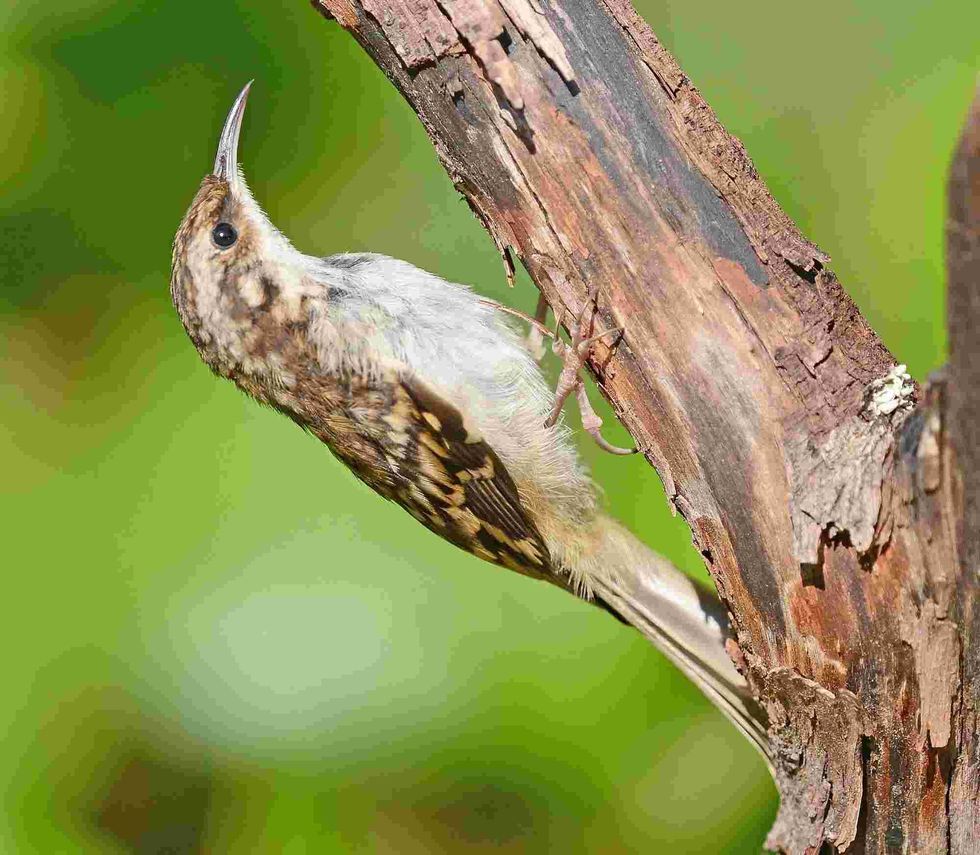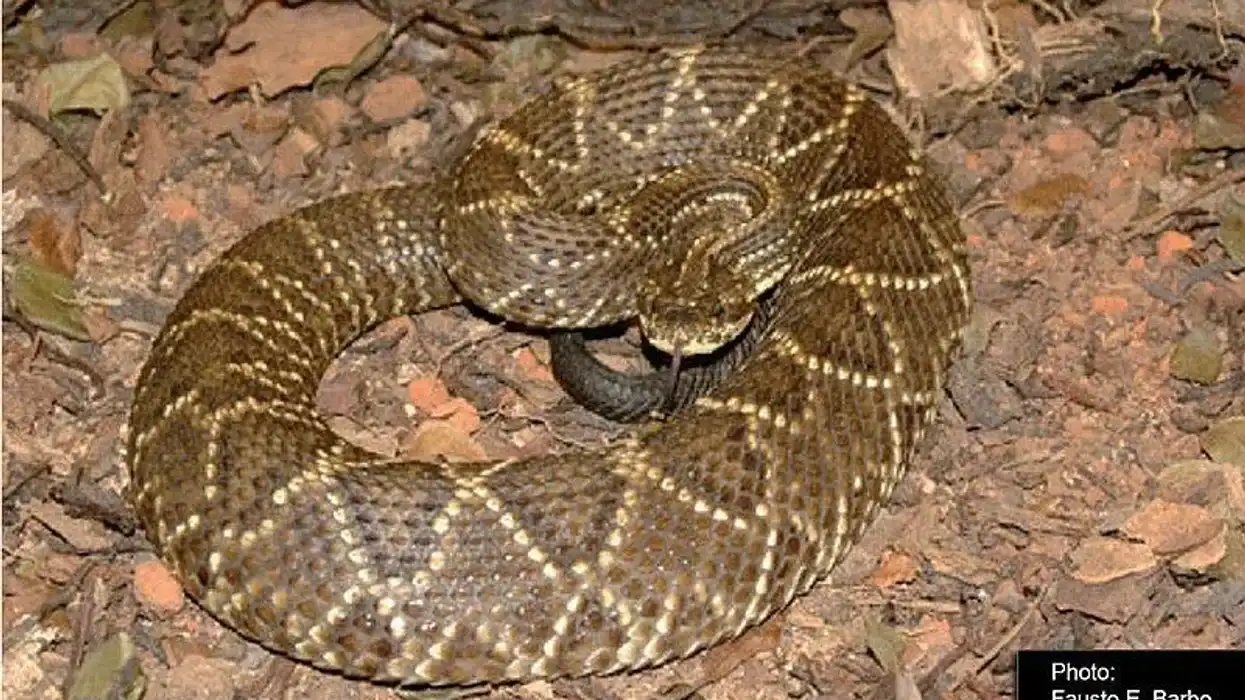Brown creeper (Certhia americana) birds are the only tree creepers that can be found in North America. These birds are tiny in size and have beautiful mottled feathers which help them stay camouflaged.
The habitat of these birds is the forests. They live on loosened tree barks on which they forage and make nests.
These birds live throughout North America.
Though, the birds that live in the northern parts migrate to the south in the winter and migrate back to the northern parts again in the summer. Due to the appearance of these birds, even if they are in front of you, chances are you won't be able to see them, though you can recognize them by their calls.
The brown creeper sound is high-pitched. These songbirds sing when they are defending their territories from other birds and during the breeding season when the males are trying to attract females.
These birds stay with their parents for quite some time at the beginning of their lives. As for their eggs, the females take care of incubation, the male takes care of the female in this period of time and they both take care of the nestling once they hatch.
Read on to know more about brown creepers, and if you like these articles, then check out lyrebirds and shrikes.
Brown Creeper Interesting Facts
What type of animal is a brown creeper?
The brown creeper (Certhia americana) is a kind of bird. They belong to the treecreeper family of birds.
What class of animal does a brown creeper belong to?
Brown creeper belongs to class Aves of animals.
How many brown creepers are there in the world?
Not much research has been done on the population trend of these North American birds. Hence, the exact population of this bird is not known, but according to the International Union for Conservation of Nature, the status of the population of the bird has been stable for the last 40 years in its native areas.
Where does a brown creeper live?
Brown creepers are native to North America. The brown creeper range extends from the northern parts of Nicaragua to Alaska and Canada.
These North American birds don't usually migrate but only the ones that live in the far north travel down south in the winters. In the south, they inhabit mainly forests of the Western United States, places like the northern mountains of California, Oregon, and the Rocky Mountains of western parts of Washington.
In the winter, brown creepers preferably stay in the lower altitude regions of the United States. They can also be seen on the western coasts and the southern and central inland of British Columbia.
What is a brown creeper's habitat?
The sole habitat of these birds of North America is the forest. More specifically they prefer coniferous forests. They are seen living and hunting among the large trees, but they also avoid the trees of the forests that are too large.
They can live in mixed coniferous forests too, like coniferous-deciduous forests. The brown creeper nest can mainly be seen in a dead or dying tree. They build it between a tree trunk and a loose piece of bark.
Who do brown creepers live with?
The brown creepers are known to live in familial structures. As hatchlings, they begin their lives by staying with their parents.
Later in life, in the winter, brown creepers are known to flock together with other species of birds to hunt for food and migrate from one place to another. They only roost together with others of their own species.
How long does a brown creeper live?
The lifespan of these North American birds on average is not known in exact numbers, but the longest living bird of this species known to us was four years and seven months of age.
How do they reproduce?
The breeding season of the brown creepers comes around the months of April to July. These birds are monogamous in nature.
The courtship ritual includes the male brown creeper singing in order to captivate any potential mate. When a pair forms, the male and the female start to flutter their wings in a quick manner and start to chase one another.
After pairing off, the male and female will choose a nesting site and the female will build a nest. The nests are made with pieces of bark and feathers and take up to 30 days to build. Then between three and seven eggs are laid and the incubation period of these brown creeper eggs is about 13-17 days.
During this time of incubation, the male feeds the female. The birds are fed by both their male and female parents for a long time.
What is their conservation status?
The conservation status of brown creepers is listed as of Least Concern in the International Union for Conservation of Nature Red List. The population of these birds has been stable for a long time, so no conservation efforts have been made.
The only things that threaten their livelihood are climate change and habitat loss due to deforestation, but the good news is that it still hasn't made a big impact on their population.
Brown Creeper Fun Facts
What do brown creepers look like?
Brown creepers are small. Their wings, head, and back are dark-brown with white streaks. The patterns on their body are mottled.
Their underparts are usually white, and they have a long stiff tail that these birds use to go up and around the trees. The males and the females are identical, other than their bills.
Both the sexes have curved beaks or bills, but the males have a bill that is a little longer than the females. All in all, if you see these birds from a distance sitting on the tree bark, you probably would not be able to spot them at first. Their body color helps them camouflage with the surroundings.
How cute are they?
These North American birds can seem extremely cute to many people due to their tiny size and distinguishing color. Little is known about their behavior towards humans, but this mysterious aura only makes them more interesting.
How do they communicate?
Brown creepers use visual cues and vocalizations to communicate. During the breeding season, the pairs engage in courtship rituals by chasing one another by fluttering their wings.
The other times, they mostly sing in short bursts at a high pitch. This brown creeper bird call sounds like if you dropped a small chain on a heap.
When the males get territorial towards other males of their own species, of similar species, or of other species, they sing a specific high-pitched song to defend their territory. Their songs help everyone identify these birds as their plumage works as camouflage.
How big is a brown creeper?
These birds are 4.6-5.3 in (11.7-13.5 cm) in length, and their wingspan is about 6.7-7.9 in (17-20 cm). These are small-sized birds, but they are larger in size than golden-crowned kinglets. Golden-crowned kinglets are 3.1-4.3 in (8-11 cm) in length.
How fast can a brown creeper fly?
The exact speed at which the brown creepers fly is not yet known, but they sometimes can be seen flying in circles around a tree close to the bark at high speed. Usually, when they are foraging, they move from one tree to another by flying slowly.
How much does a brown creeper weigh?
These birds are tiny. They weigh only about 0.2-0.3 oz (7.2-10 gm).
What are their male and female names of the species?
The females of the species are called hens and the males of the species are called cocks.
What would you call a baby brown creeper?
A baby of a bird is called a hatchling or nestling. When these birds get the feathers on their wings, with which they can fly, they are called brown creeper fledglings.
What do they eat?
These birds are omnivorous in nature. They usually eat small insects and small arthropods, such as weevils, stink bugs, spiders, fruit flies, pseudoscorpions, and more. Their diet changes to different vegetable matter and seeds in the winter.
Are they aggressive?
A brown creeper is not highly aggressive in nature, but it can become pretty territorial during the breeding season. Even then, brown creepers are not known to fight amongst themselves. They even forage and migrate with birds of other species in the winter, so we can assume they are not aggressive towards them either.
Would they make a good pet?
The brown creeper is not known to stay at home as a pet. They are wild birds and making a suitable environment for them at home would be pretty difficult, so it's better not to keep them as pets.
Did you know...
Brown creepers can be attracted by using nuts and berries suet or using bark butter on trees. These birds usually like to stay around large trees.
They stay in the northern part of North America in the summer and this range will decrease. Its winter range, on the other hand, will increase with time due to global warming and climate change.
These birds help keep the balance of the ecosystem by controlling the population of pests as they eat insects.
Some of the nests of brown creepers have been seen to have two openings. One on the upper side and another on the lower side of the nests. The opening on the upper side is for exiting the nest and the one on the lower side is for entering the nest.
A group of brown creepers is called a 'sleaze or a 'spiral'.
What do brown creepers do when threatened?
The predators of brown creepers are red squirrels, deer mice, flying squirrels, wood rats, and more. The biggest defense mechanism of this bird from the predators is camouflaging itself.
If it feels threatened in any way, it spreads its wings and stands perfectly still on the bark of the tree for a few minutes and due to its plumage, it blends in perfectly with the tree.
How do brown creepers hunt for prey?
Brown creepers hunt for prey on tree bark. They start searching for prey from the bottom of a tree and fly in a spiral toward the top of the tree. When they reach almost the top of the tree, they would fly down to the bottom of another tree and start the process all over again.
Here at Kidadl, we have carefully created lots of interesting family-friendly animal facts for everyone to discover! Learn more about some other birds including the yellow warbler and the song thrush.
You can even occupy yourself at home by drawing one of our wood thrush coloring pages.









